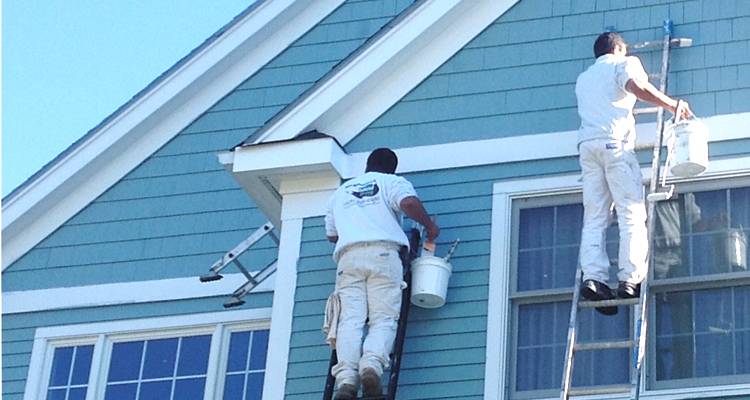When it comes to upgrading your home’s appearance, few investments offer the same immediate impact as a fresh coat of paint. Whether you’re sprucing up your interior or refreshing your exterior, the expertise of a house painter can make all the difference. But how do you find the right one? What should you expect from the process? And what sets a professional painter apart from DIY efforts?
In this detailed guide, we’ll walk you through everything you need to know about hiring a house painter. From understanding the job scope to tips on choosing the right color, you’ll gain a clear understanding of how to ensure your painting project is a success.
What Does a House Painter Do?
A house painter is a skilled professional responsible for preparing, painting, and finishing residential spaces. Their work goes beyond simply applying color to walls—they are trained to ensure surfaces are smooth, even, and durable for years to come.
Key Responsibilities:
- Surface preparation (cleaning, sanding, caulking)
- Applying primer and paint
- Repairing minor drywall or surface imperfections
- Selecting appropriate paint types
- Applying coatings using brushes, rollers, or sprayers
- Ensuring clean lines and a professional finish
Types of House Painters: Interior vs. Exterior
Interior House Painter
An interior painter focuses on walls, ceilings, trim, doors, and cabinetry. They often work in furnished spaces and must be careful to avoid splatters and protect furniture.
Exterior House Painter
Exterior painters handle a wide range of surfaces including siding, brick, stucco, and eaves. Their work is exposed to weather, so durability and weather resistance are key concerns.
Each type of house painter requires different tools and techniques depending on the job at hand.
When Should You Hire a House Painter?
Hiring a professional becomes essential when:
- The project is large or complex
- Surface preparation requires repairs
- Time is limited
- High-quality finishes are expected
- You want long-lasting results
Common situations for hiring include:
- Prepping a home for sale
- After renovations or remodels
- Changing color schemes for style updates
- Refreshing peeling or faded paint
How to Choose the Right House Painter
Choosing the right painter can be the difference between a stress-free project and an ongoing headache. Here’s what to look for:
1. Experience and Portfolio
Ask how long they’ve been in business and review examples of past work.
2. Reviews and References
Check for client feedback or ask for references to assess reliability and quality.
3. Licensing and Insurance
Ensure they are licensed (if required in your region) and fully insured.
4. Written Estimates
A reliable house painter provides a detailed estimate outlining labor, materials, and timeline.
5. Communication
Choose someone who listens well, offers advice, and sets realistic expectations.
Average Cost to Hire a House Painter
The cost can vary significantly depending on several factors:
Factors That Influence Cost:
- Square footage
- Surface condition
- Type of paint used
- Number of coats
- Decorative or detailed work (trim, accent walls)
General Price Ranges:
- Interior painting: $2–$6 per square foot
- Exterior painting: $1.50–$4 per square foot
Keep in mind, higher-end painters often deliver better preparation and finish quality, which can extend the life of the paint job.
How to Prepare Your Home for a House Painter
Proper preparation not only makes the job smoother but also minimizes costs. Here’s how you can help:
- Move furniture away from walls
- Take down decorations, wall art, and window treatments
- Repair any obvious wall damage if not included in the scope
- Clean surfaces of dust and grease
- Confirm color selections in advance
By preparing the space, you give the house painter a clear path to work efficiently.
Pros and Cons of Hiring a House Painter
Pros:
- Professional finish
- Saves time and stress
- Correct surface preparation
- Knowledge of proper products and techniques
Cons:
- Higher upfront cost than DIY
- Requires scheduling flexibility
- Risk of poor results if an inexperienced painter is hired
How Long Does It Take to Paint a House?
Painting timelines vary by project size and complexity. Here’s a general idea:
- Single room (interior): 1–2 days
- Full home interior: 5–10 days
- Full exterior: 7–14 days (depending on weather)
The timeline also depends on drying time between coats and surface prep needs.
Should You DIY or Hire a Professional House Painter?
DIY painting can be rewarding, but not always practical.
DIY Is Best When:
- The area is small and manageable
- You have time and some experience
- Budget is tight
Hire a Painter If:
- Quality and durability are priorities
- The space is large or complex
- There are time constraints
Professional house painters often deliver better results and save you time in the long run.
Common Mistakes to Avoid
Avoid these common pitfalls when working with a house painter:
- Not asking for a detailed contract
- Choosing based solely on the lowest bid
- Ignoring surface preparation
- Failing to ask about warranties or guarantees
- Not confirming timeline and payment schedule
Tips for a Long-Lasting Paint Job
To ensure your new paint job stands the test of time:
- Use high-quality paints suited to the surface
- Maintain good indoor ventilation to reduce moisture
- Touch up nicks and scuffs early
- Clean painted surfaces with mild soap when needed
Regular upkeep can help extend the life of your painter’s work by years.
Conclusion
A skilled house painter brings both craftsmanship and efficiency to your home improvement goals. From adding fresh color to increasing your home’s value, the right painter can transform a space inside and out. With careful selection, clear communication, and proper preparation, you’ll enjoy results that are not only beautiful but built to last.




